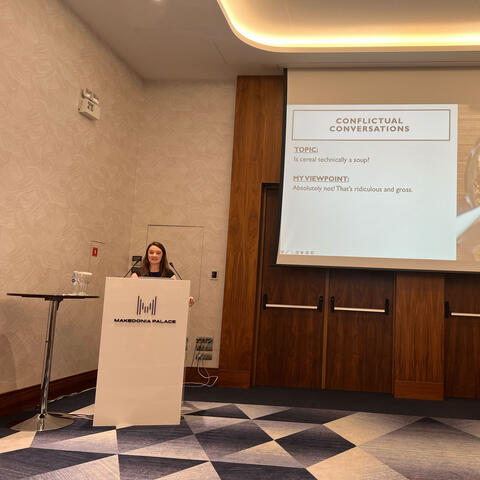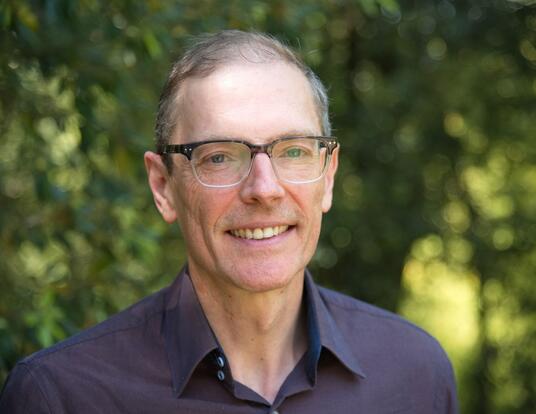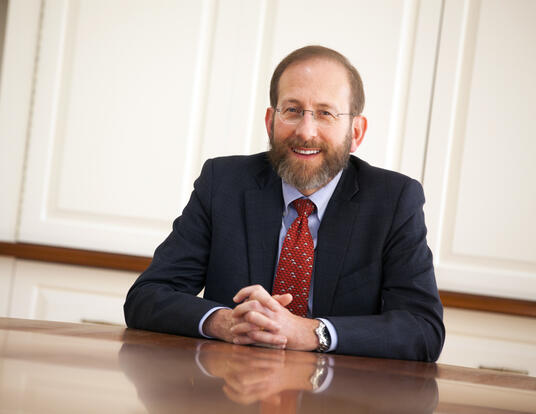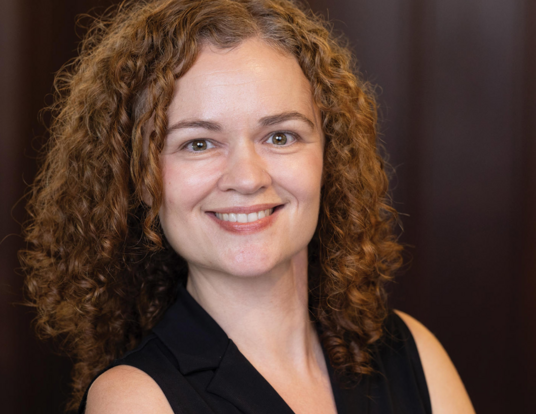Colloquy Podcast: Buying Time in the Fight Against Climate Change
According to the National Oceanic and Atmospheric Administration, July 2023 was the hottest month ever recorded on Earth. The heat wave caused hundreds of deaths, thousands of hospitalizations, and billions of dollars in damages. It also exacerbated droughts, wildfires, and power outages.
The culprit behind this unprecedented heat is climate change, driven by the accumulation of greenhouse gases in the atmosphere. The most well-known greenhouse gas is carbon dioxide, which comes from burning fossil fuels. Often overlooked is methane, which accounts for about 16 percent of global greenhouse gas emissions and has more than doubled since pre-industrial times.
Robert Stavins, PhD ’88, says that reducing the amount of methane in the atmosphere is a critical and cost-effective way to slow climate change and its impacts. To get there, the AJ Meyer Professor of Energy and Economic Development at the Harvard Kennedy School is leading a new initiative at the University’s Salata Institute that aims to reduce methane emissions from different sectors using innovative approaches and collaborations. If successful, he says the world can “bend the curve” on climate change, giving humanity desperately needed time to address the larger, long-term problem of carbon dioxide.
(This transcript has been lightly edited for clarity and correctness.)
I think it's often the case when people hear about greenhouse gases that the focus is on carbon dioxide. But you've called methane an exceptionally important greenhouse gas. What are the sources of methane emissions, the major sources? And why does it matter so much?
Why it matters so much is that methane, in terms of per unit emissions, atoms, molecules, is vastly more important than carbon dioxide. It has much greater radiative forcing associated with it. However, the total quantity of methane that comes from virtually any economy is going to be less than the total quantity of CO2.
In addition to that, there is a very interesting trade off. And that is where methane is proportionally more important for every unit because of much greater radiative forcing; its residence time in the atmosphere is much shorter than CO2. So carbon dioxide has a half-life in the atmosphere of greater than 100 years.
On the other hand, almost all of the methane that's emitted at any point in time is out of the atmosphere after 10 to 20 years. That tells us two things. It tells us that, well, if we look at the 100-year time horizon, methane doesn't look very important.
[Methane reduction] can buy time for technological developments to bring down the cost of reducing CO2. It can buy time to learn more about carbon removal.
But there's always the next 10 years. There's always the next 20 years. And, furthermore, the public policies that we have—whether they're domestic policies in the United States, in Europe, or the international policies under the Paris Agreement, the real meat of those doesn't target the year 2100. It targets 2030, a lot less than 10 years.
So over the time horizon for practical real public policies, methane reductions are extremely important, extremely valuable. They can buy time for technological developments to bring down the cost of reducing CO2. It can buy time to learn more about carbon removal. So it's very, very important for those reasons.
You asked about what are the major sources. These vary a lot from country to country. In many countries, the oil and gas sector and, to some degree, coalbed methane, are important sources. From the oil and gas sector, these are leaks, typically. They are leaks from pipelines from wellheads.
Another sector that's very important is landfills. So when waste decomposes, methane is one of the products. And there are technologies for capturing that methane. But, otherwise, it's going up into the air.
And then a third important sector is agriculture. And this is both livestock and plant-based agriculture; for example, paddy rice. Now if you look at some countries, oil and gas will be by far the most important sector of emissions. If you look at other countries, it's going to be agriculture. It varies geographically.
You used a term in the beginning of your response that I'm not sure everyone will understand—radiative forcing. What do you mean by that?
So what I'm referring to is—remember, this is the greenhouse effect—that putting these greenhouse gases into the atmosphere—CO2, methane, and some others—has the effect of putting in place thicker and thicker panes of glass. So, transparent—pardon me—visible radiation still comes through that transparent glass. Ultraviolet radiation comes through. But what cannot go through on the way out is infrared radiation, which is also called heat. Radiative forcing then is a measure, you could say, in a sense, of each molecule of one of these greenhouse gases: how thick are the panes of glass that we're putting in place that allow the incoming radiation but prevent the outgoing infrared radiation of heat?
Talk a little bit more about the big idea behind this new initiative at the Salata Institute that's all about mitigating methane emissions. You said this idea can “bend the curve” on climate change and buy the world time to address the problem of CO2.
Decreasing methane emissions because of the radiative forcing that they bring about, the climate change they bring about, is so dramatic over a short period of time. By reducing emissions now, we can substantially reduce climate change by taking action for one year. And you've got 10 to 20 years of benefits from that. And then that can delay, to some degree, the necessity or at least the cost of reducing CO2 emissions because continued technological change can make CO2 emissions reductions lower cost.
Am I correct in saying that, at least until recently, we haven't really had a good idea of who the big methane emitters actually are?
So one of the challenges has been, until, as you suggest, fairly recently, is the tremendous amount of uncertainty of the quantities and locations of methane emissions. However, now there are a number of satellites up in orbit. And more satellites, including MethaneSAT in the spring of 2024, are going up.
And these satellites are becoming more sensitive and able to estimate the location of particular concentrations with greater geographic precision. But that's concentration because that's what they observe. They're seeing how much methane is in the atmosphere at a moment in time.
What we're interested in are the emissions that lead to those concentrations. And so for example, our colleague, Daniel Jacob from Earth and Planetary Science at Harvard, he carries out work. And he's part of our University-wide initiative, of course. He takes those measurements of concentrations, combines it with some other information from ground level, and statistically estimates with remarkable precision the quantity, timing, and location of the emissions that brought about those concentrations.
The Salata Institute is a relatively new organization at Harvard. [The methane project] is a new initiative. How did it come about?
Well, I think the first and most important thing is the generosity of the Salata family and the fact that they have given these funds and are committed to this area of climate and sustainability. Together with that is the fact that Harvard has established its first vice provost for climate and sustainability and that position is held by Professor James—Jim Stock from the Harvard Department of Economics—who is passionate on this topic and is a leading scholar in the area. The combination of the financial resources and Jim Stock's leadership is what led to the invitation for applications for these University-wide research clusters. We put together an application, and we were fortunate to be approved.
The initiative brings together—17, is it?—experts at Harvard from four departments at the Faculty of Arts and Sciences and then 5 different schools at the University. Can you talk a little bit more about who these people are? And what's the value of such an interdisciplinary approach to the problem of climate change?
Well, I'll say, first of all, they're the dream team of people that I would want to have involved. Everyone who we tried to recruit to join in what was originally a proposal to the Salata Institute said yes, participated, and are now participants in the initiative itself. They range from people in the natural sciences—Steve Wofsy, Daniel Jacob—doing satellite measurements and airplane-based measurements to, perhaps the other extreme, also in arts and sciences, Emma Rothschild in the Department of History.
But also, what you might expect more are a number of people from the Department of Government, Harvard's Political Science Department—Steve Ansolabehere, Jeff Frieden, Dustin Tingley. From Harvard Business School—Forrest Reinhardt and Michael Toffel obviously taking the business perspective on this, which is very important because, by the way, in the oil and gas sector, since what's being leaked into the atmosphere is a merchantable product, which is a primary constituent of natural gas, it can be in the financial interest of companies to address this. That's why the Business School contributions are so important. And then looking at policy and other aspects from the Harvard Kennedy School—my colleague, Joe Aldy; John Holdren; Meghan O'Sullivan, a political scientist; and myself. Obviously, the legal aspects, the regulatory aspects, are crucial. Jody Freeman, Carrie Jenks, Richard Lazarus from Harvard Law School. And then finally, we're interested in health co-benefits of addressing methane emissions reduction. And on this and other aspects, Jim Hammitt at the Harvard School of Public Health, who, as a decision scientist, is contributing.
We anticipate that we'll be making progress in the oil and gas sector in terms of identifying technologies that can be in the interest of business to reduce emissions.
The reason it's important to bring all these people together is that the nature of the issue is that if we're going to do useful research, which can lead to real action, it can't be within the narrow silo of a single discipline because what's needed is something much broader than that. So, for an example, if we're going to help the US EPA to further the regulatory approaches they're taking, then the satellite measurements are going to be valuable. But the input from Harvard Law School in terms of regulatory design on that will be useful. Understanding what the costs of alternative technologies will be important.
And so for each of these, we can deliver actionable research products by bringing together multidisciplinary groups. We're engaged in a 3-year project—36 months. We really begin at the beginning of the term, the academic year, September 1.
We anticipate that we'll be making progress within the oil and gas sector in terms of identifying technologies that can be in the interest of business to reduce emissions. We anticipate that in the second and third year of the project we'll be working in the agricultural sector. And possibly in the first year as well as succeeding years we'll be working looking at technologies for landfills. And, in each case, we're looking at measuring emissions, identifying technologies—cost-effective policy instruments that can bring about the implementation of those technologies at lowest possible cost—and then a business perspective on what can really happen on the ground.
You teach at the Kennedy School. That's a training ground for policymakers and folks who go into government much of the time. I obviously don't have to tell you how polarized our politics are, probably more than at any time since certainly the Civil Rights Movement—maybe since the Civil War. How do you think the initiative's work can make a difference in the kind of weaponized political environment we have now?
Well, in the United States, it's a huge challenge. And I should say that although much of our initial focus is on the US, this project is global in its dimensions. And we'll be working in other countries as well. I was in India. Last week, I was in Doha and Qatar a month before that, I'll be back in Doha a few weeks from now and in late September.
But in the United States, political polarization has essentially made climate change a much more difficult problem than it needs to be. I started working on environmental problems during the George HW Bush administration’s Clean Air Act amendments in 1990, which were passed in a truly bipartisan way. In the House of Representatives, it was something like 90 percent of Democrats and 83 percent of Republicans voted for it. Our students today at Harvard College find that reality completely unbelievable.
Political polarization has roots that go way beyond the environmental area. In fact, I would refer to our inability to take action on climate change as an unfortunate consequence of that political polarization, essentially collateral damage that's resulted. What we can do that we hope can help with that is to identify approaches that are low cost and correctly take into account impacts on communities. I can't claim that they're all going to be win-win policies.
Any policy has costs. And it means that there are going to be individuals and groups who may be made worse off. But we're going to be looking at policies that can identify those, quote-unquote, "losers."
So, for example, in the Clean Air Act amendments of 1990, I helped the Bush—White House at the time— to design the SO2 (sulfur dioxide) allowance trading system, which was going to switch the production of coal from high-sulfur coal in Appalachia to low-sulfur coal in the Powder River Basin out West, which is exactly what happened. And that was great for acid rain, less sulfur content of the coal. But that obviously was not good news for Appalachian coal miners.
Now, what we could have done was not put in place the policy. But, instead, we put it in place. And with the help of the late Senator Kennedy from Massachusetts, simultaneously with those Clean Air Act amendments in 1990, a job retraining program was enacted by the Congress, also bipartisan, to help out with those impacts. And those are the kinds of policies that we'll be looking at. If the policy raises revenue as taxes do, as methane fee does, or a cap-and-trade system could, we'll look at the uses of those revenues to target communities that are going to be adversely affected by the policies.
You made the point that the initiative at the Salata Institute isn't just about the US. It really has a global focus or scope. Obviously, climate change in the Global South is a difficult kind of needle to thread. The perspective from folks in India and China is, “Hey, you guys got to put carbon into the atmosphere for 150 years or something. We're just getting our industrial base online here, and you want us to curb it because of climate change.” In your experience, how open do you think burgeoning economic giants like China and India are to climate mitigation efforts?
Well, on the one hand, those complaints from the developing world are factually correct—that the principle under the United Nations Framework Convention on Climate Change, the very important principle of common but differentiated responsibilities, recognizes that it is a global commons problem. It doesn't matter if a ton of emissions come from Poughkeepsie or Peking. They have the same effect in the atmosphere.
But it's also true that going back to the beginning of industrialization—the US mainly, but also Europe and other parts of the world—the industrialized world has been emitting. And so we are responsible for a lion's share of the stock, the accumulated stock in the atmosphere, because, remember, with CO2, it comes out of the atmosphere so slowly. So that's absolutely correct. That's where, in a sense, the responsibility—I don't know if it's ethical responsibility, but just the numerical responsibility—rests.
On the other hand, if you look at emissions today—CO2 emissions coming from the industrialized world—the OECD countries are flat to declining, in Europe, the United States, Japan, Australia, New Zealand. The emissions are increasing rapidly from the large emerging economies such as China, India, Brazil, Korea, South Africa, Mexico, and Indonesia. That's where the emissions increase is.
So that means the action on emissions reduction is going to have to be in those countries—or we're not going to do anything about the problem. But we can separate who does it from who pays for it. And the way in which the rich countries can participate is by helping to finance those emissions reductions in the large emerging economies.
Finally, it's always important to have a reminder of the stakes, which maybe takes us back to where we started the conversation. Talk about that if you can. What happens if we don't get greenhouse gas emissions under control? What happens if we don't hit the UN targets by 2030?
Well, pending the possibility of a miracle, which might not be a theological miracle, but it might be some technological change that you and I can't even picture now, barring that taking place, we're going to experience greater and greater degrees of climate change in terms of the weather extremes that we're seeing, the high temperatures that we're seeing, shifts in precipitation patterns, which in some cases lead to greater droughts in Africa and more flooding in New England. We'll see that continue. There isn't a certain point at which there's a bright line, a discontinuity in the damage function, but the damages are going to get worse and worse.
It's in the interest of elected officials who want to be re-elected to give benefits now and place the costs on the future. [The fight against climate change] is asking politicians to do precisely the opposite.
The question is whether and when action will begin to take place. The reality is that it's a very difficult political problem. On the one hand, it's a global commons problem. So, it's in the interest of every jurisdiction not to take action and to benefit from the actions of others. You've got that spatial reality. And then you've got the intertemporal reality that the damages of climate change have a ton of emissions now that are going to last, in the case of CO2, for over 100 years. And so the damages are very much about the long term. But if you want to reduce those emissions, you've got to do it now. And so the policy and the attendant costs are upfront.
Well, that situation of up-front costs and delayed benefits is anathema to the political process in representative democracies where it's in the interest of elected officials who want to be re-elected to give benefits now and place the costs on the future. This is asking politicians to do precisely the opposite. So if you combine that, that intertemporal asymmetry with the global commons nature of the problem spatially—that's why a former member of the US Senate with whom I've worked closely for many years, Timothy Wirth from Colorado, has always said, this is the most difficult political problem one could even imagine. And, sadly, I think he's absolutely right.
Get the Latest Updates
Join Our Newsletter
Subscribe to Colloquy Podcast
Simplecast





